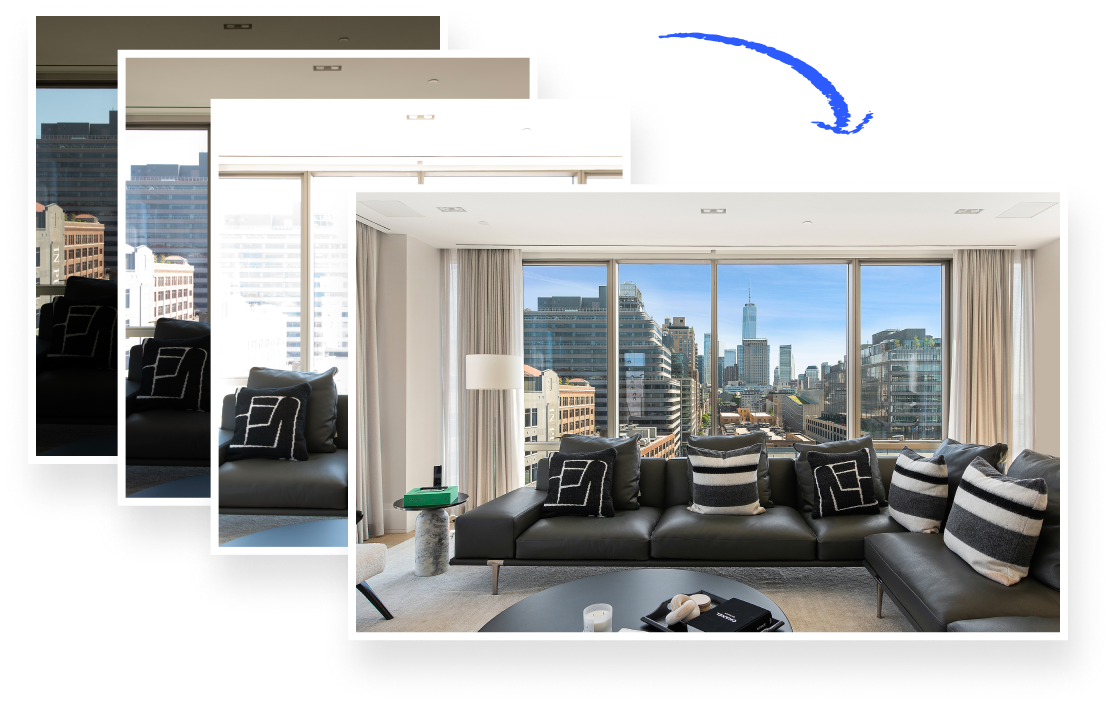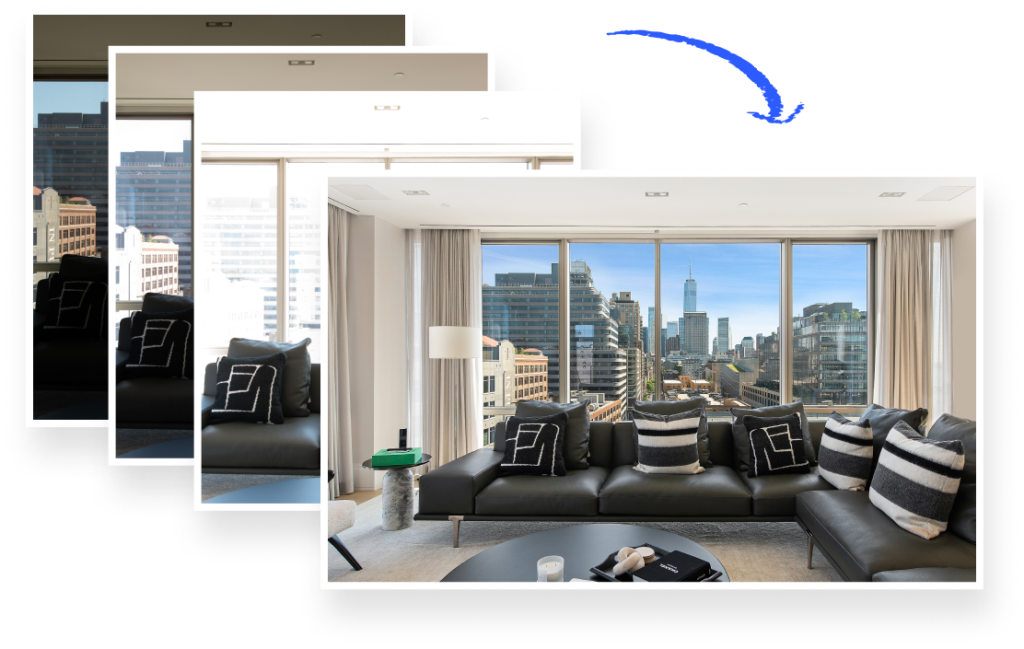High-Dynamic-Range (HDR) photography is a powerful technique for capturing detailed and well-exposed images, especially in challenging lighting conditions. In real estate photography, HDR can be particularly useful for showcasing properties with a range of lighting conditions, from bright exteriors to dimly lit interiors. Here’s a comprehensive guide on how to use HDR techniques to enhance your real estate photography.
Understanding HDR Photography
What is HDR Photography?
HDR photography involves taking multiple shots of the same scene at different exposure levels and then merging them into a single image. This process captures a wider range of light and dark details than a single exposure could achieve. HDR is ideal for real estate photography, where you often encounter high-contrast scenes, such as bright windows and dark interiors.
Benefits of HDR for Real Estate:
- Enhanced Detail: HDR captures more detail in both the shadows and highlights, ensuring that all aspects of the property are visible.
- Balanced Exposure: It balances exposure levels across different parts of the image, making it easier to showcase the property’s features.
- Improved Aesthetics: HDR can produce images with rich, vibrant colors and improved overall appearance.
Setting Up for HDR Photography
1. Use a Tripod:
To ensure that the multiple exposures align perfectly, use a tripod. This prevents camera shake and maintains the same framing across all shots.
2. Set Your Camera:
- Shoot in RAW: RAW files contain more data than JPEGs, providing greater flexibility in post-processing.
- Manual Mode: Use manual mode to control exposure settings. Ensure that you use the same aperture for each shot to maintain depth of field consistency.
- Bracketed Exposures: Set your camera to take bracketed shots at different exposure levels (e.g., -2, 0, +2). This helps capture the full dynamic range of the scene.
3. Choose the Right Lighting Conditions:
For best results, shoot when the lighting conditions are relatively stable. Avoid drastic changes in natural light, such as during sunrise or sunset, unless you are aiming for a specific effect.

Capturing HDR Images
1. Take Multiple Exposures:
Capture at least three images: one for the highlights, one for the midtones, and one for the shadows. More exposures can provide finer control but are not always necessary.
2. Maintain Consistency:
Ensure that your camera settings remain consistent across all exposures. This includes maintaining the same white balance and focusing settings.
3. Check for Artifacts:
Review each exposure to check for any artifacts or unwanted elements. Ensure that each image is clear and free from motion blur.
Processing HDR Images
1. Use HDR Software:
Software like Adobe Lightroom, Photomatix, or Aurora HDR can merge your bracketed images into a single HDR photo. These tools offer various presets and adjustments to enhance the final image.
2. Merge Exposures:
Import your bracketed images into the HDR software and use the merge function to create a high-dynamic-range image. The software will align the images and combine the details from each exposure.
3. Adjust Tone Mapping:
Tone mapping adjusts the brightness and contrast of the HDR image to make it appear natural. Fine-tune the settings to balance the exposure and enhance the overall look. Avoid over-processing, which can lead to unnatural colors and excessive noise.
4. Refine in Post-Processing:
After merging and tone mapping, use photo editing software to make additional adjustments. Correct any color imbalances, sharpen details, and remove any noise. Ensure that the final image looks realistic and appealing.
Best Practices for HDR Real Estate Photography
1. Focus on Key Features:
Highlight the property’s most important features, such as spacious rooms, architectural details, and unique selling points. HDR should enhance these features, not overshadow them.
2. Maintain Realism:
While HDR can make images look stunning, it’s important to maintain a realistic appearance. Avoid excessive saturation and contrast that can make the property look artificial.
3. Combine HDR with Other Techniques:
Use HDR in conjunction with other photography techniques, such as wide-angle lenses and proper staging, to achieve the best results. HDR should complement your overall photography strategy.
4. Practice and Experiment:
HDR photography requires practice and experimentation. Test different settings, exposures, and post-processing techniques to find what works best for your style and the properties you photograph.
Conclusion
HDR photography is a valuable tool for real estate photographers, allowing you to capture detailed and well-exposed images in challenging lighting conditions. By using HDR techniques effectively, you can enhance property listings, attract potential buyers, and showcase properties in their best light. Follow these tips to master HDR photography and elevate your real estate marketing efforts.

